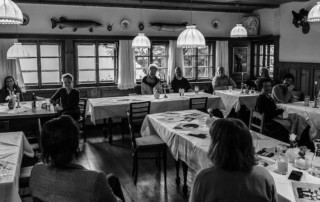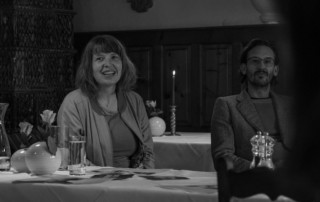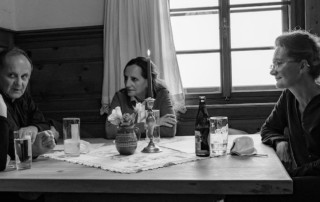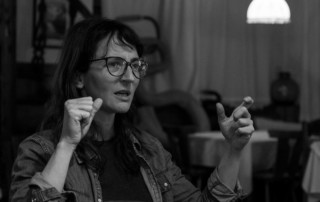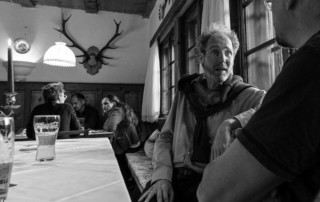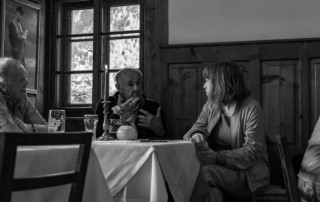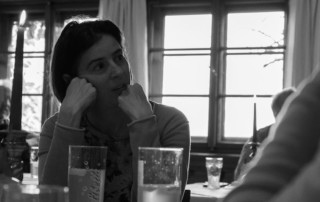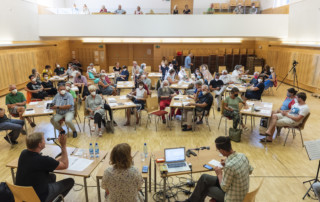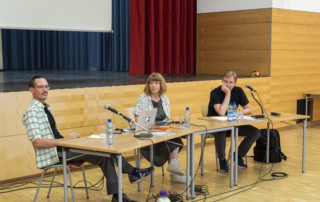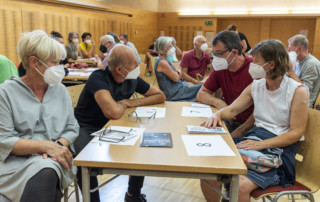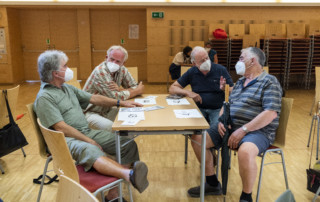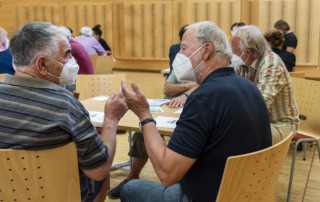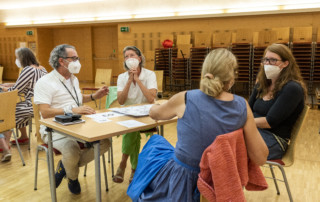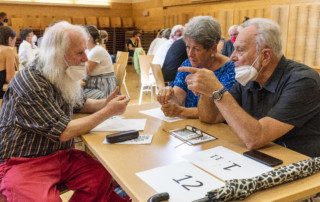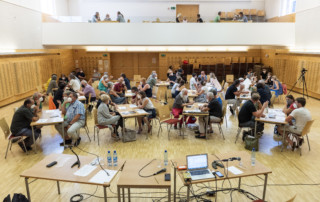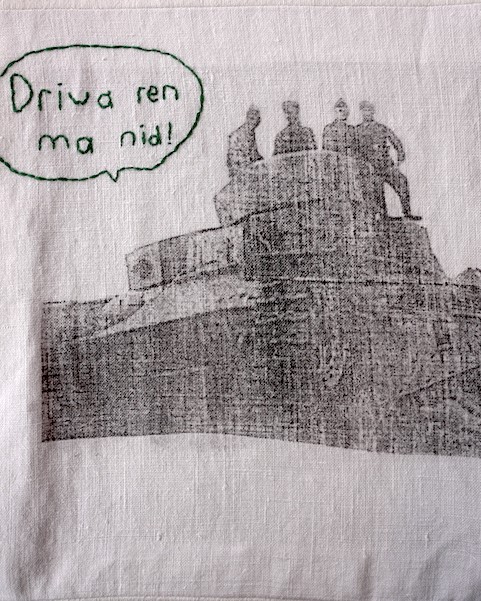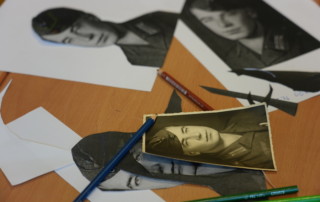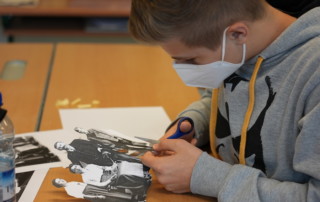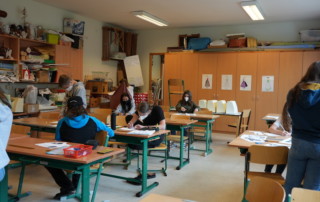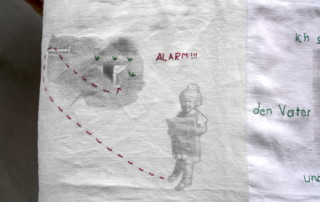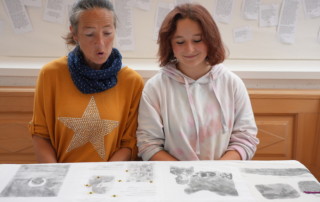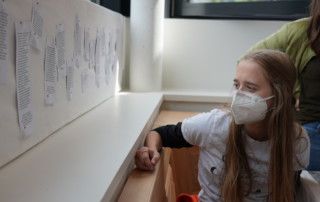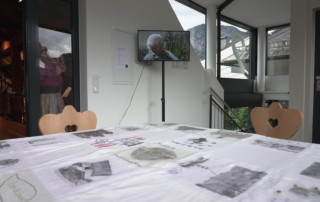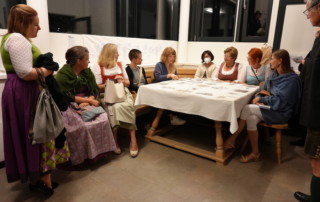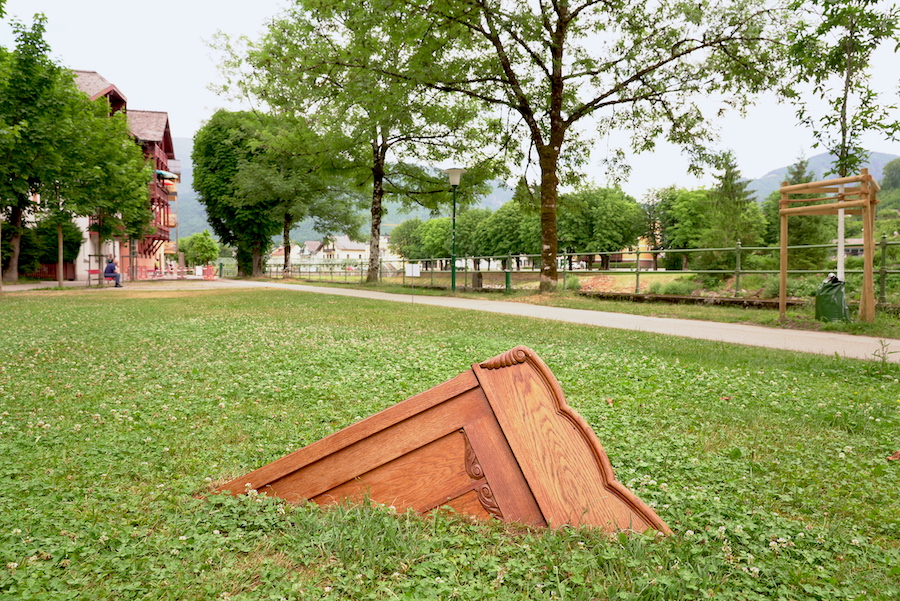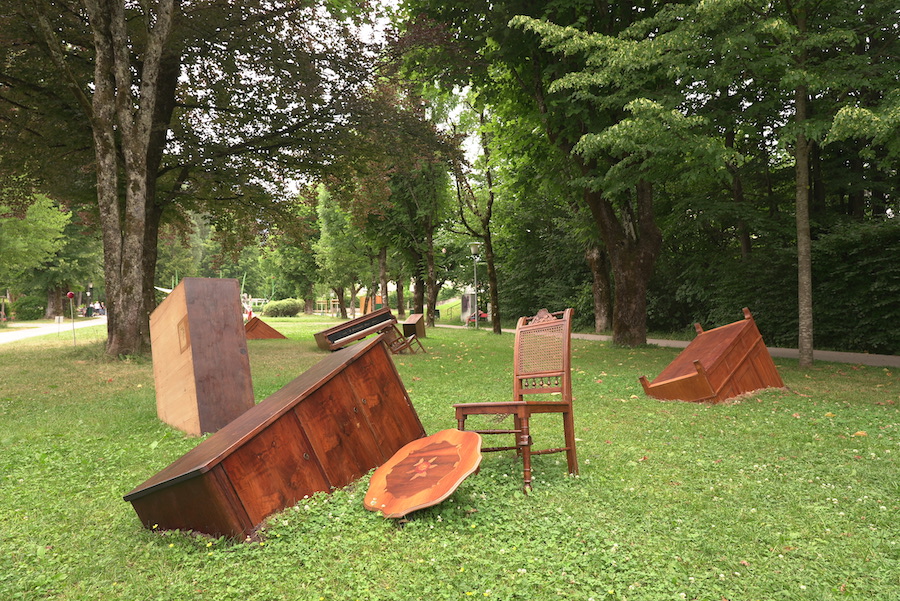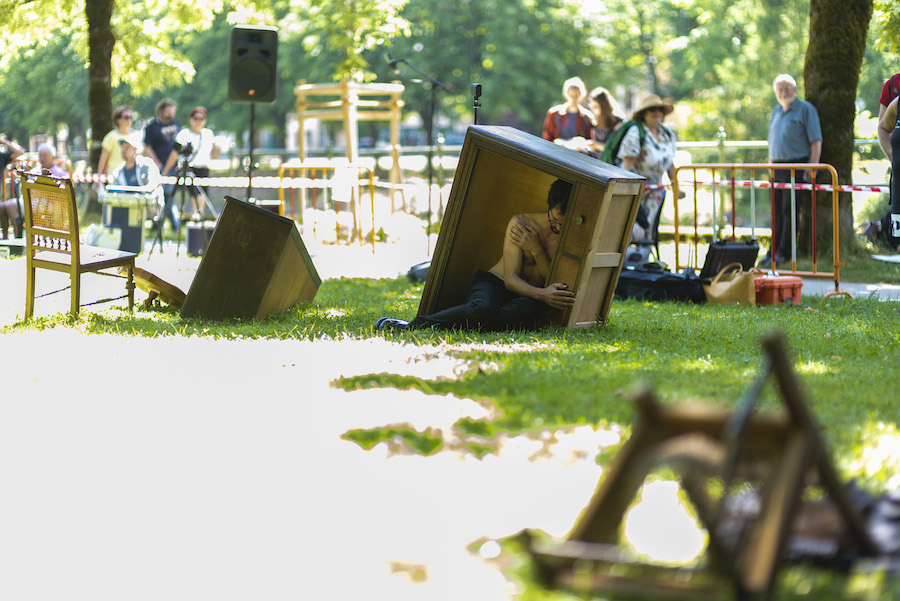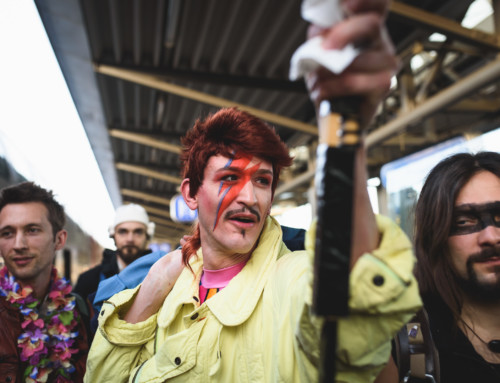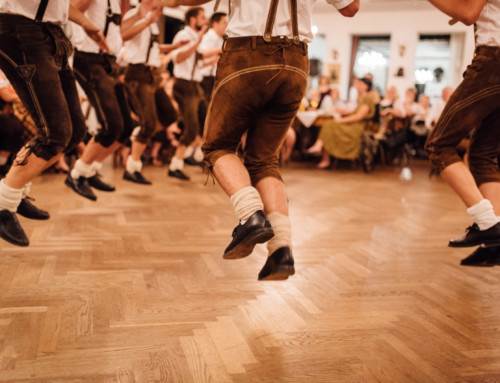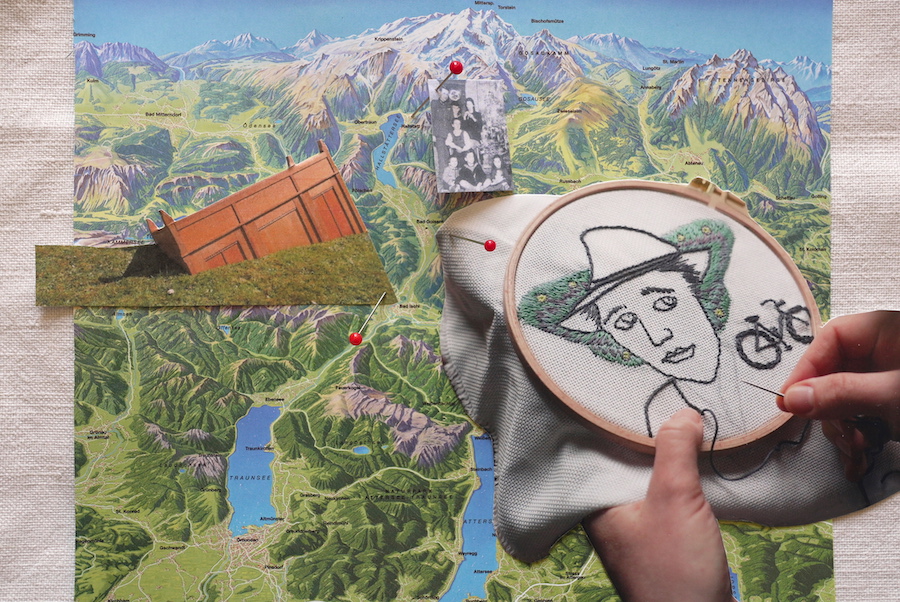
my roles: Co-moderation and coordination the Table Talks; kartistic advice for
the Installations Silent witnesses and Table Talks
MULTI-LAYERED STORY(S)
Festival of the Regions, 2021
Bad Ischl / Salzkammergut
What stories move us? And how do we pick them up to tell them?
Teresa Distelberger and her multidisciplinary Team from artists, Citizens, students and local historians employed itself in a several months participative process with History(n) the 1930he/40s in Bad Ischl, Bad Goisern and Hallstatt. Social sculpture or cultural acupuncture thereby arose through Three different Formats with the titles: Findings, Silent witnesses and Table Talks.
Concept and artistic direction: Teresa Distelberger
Documentation of the entire project:
www.artofco.com
TABLE TALKS
Dialogical art and installation
“By talking, you canomcome d’Leut zsamm”, so also at a table in familiar company. Which stories do we tell each other when we sit together – and which ones more rarely? What stories are passed on from one generation to the next in a family or a locality, and which stories fall in the process as difficult to digest “under the table”? In a series of moderated table discussions, interested people from the population were invited to tell stories from their families and localities. Through careful, precisely designed impulses from the facilitation team, a trusting framework emerged thatallowed fordepth and perhaps thebeginning of metabolization.
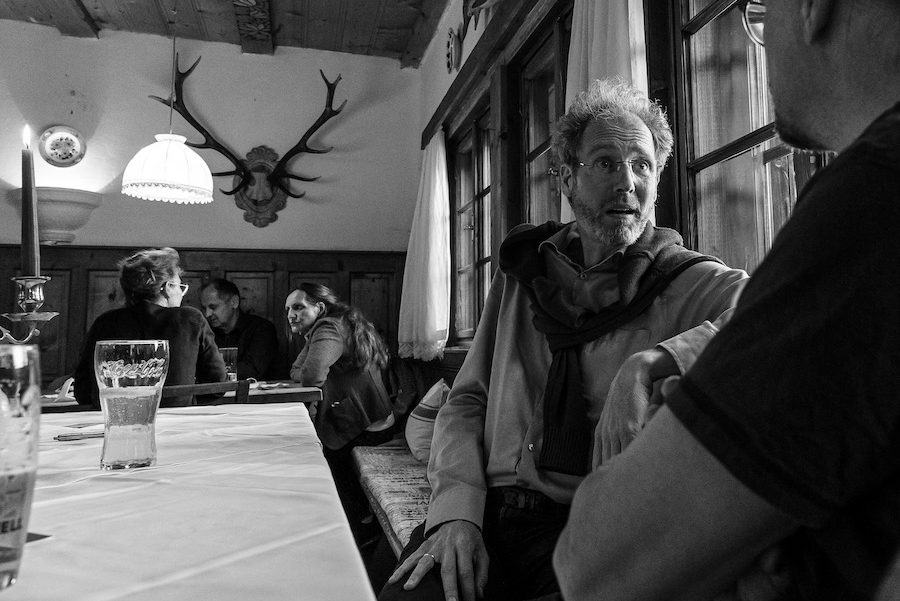
Within the framework of the project, four open table discussions took place: June 1 in Hallstatt,
June 8 in Bad Goisern, 15.+29. June in Bad Ischl (in cooperation with Günter Kaindlstorfer, Radio Ö1) .
Dialogical design: Teresa Distelberger and Mario* Sinnhofer
Also with pupils of the World Heritage Middle School and the Digi Middle School Bad Goisern table discussions took place within the framework of a interdisciplinary projects held. Motivated by the history teachers, it was in the first step by the young people in their own families to Stories of the 1930s/40s Years geasks From these Narratives originated then in needlework class Images in which historical photos with lavender oil-Druck transferred to linen, and additionally with references to the backgroundStories were embroidered. The collected works / or stories were by one example each from the open table discussions (see above) supplemented, sewn into a common tableclothsewn together, and displayed in an at
Hand.Werk.Haus Bad Goisern
dished up.
Old fabrics were donated by the local population to be printed and embroidered for this tablecloth – including parts of the historically significant “Steeg Linen”: In Steeg on Lake Hallstatt, the National Socialists had stored large quantities of fabrics to supply their “Alpine Fortress”. The hardship and chaos at the end of the war caused many local residents to steal valuable linen from there, which can still be found in some households today.
The installation has been realized beyond the Festival of the Regions by the
Hand.Werk.Haus Bad Goisern
in the context of the exhibition
Craft asks to table
presented, together with written short descriptions of the stories presented. Through cooperation with Barbara Kern, curator and art educator of the house, the installation continued with conversations about multi-layered history(n) the 1930er/40s years revived.
SILENT WITNESSES
Installation in public space and performance
In Sisipark Bad Ischl , antiquarian pieces of furniture emerged from the manicured lawn surface like pieces of a repressed past. They reminded the audience that in the course of coming to terms with the “Aryanization” of Jewish citizens’ villas, the original furnishings and household effects were rarely restituted, and that some pieces – knowingly or unknowingly – are still in many households in the region. What changes of ownership have the pieces of furniture experienced, what might they tell us, and what questions do they invite us to ask?
The installed pieces of furniture were donated for the project by people from the region (or found via the second-hand market), and rebuilt by the class for restoration technology at HTBLA Hallstatt.
The musician, choreographer & Performer
Simon Mayer
developed for the installation a performance with the title
The Heir
in which he deals with the inner conflicts of those peopleewho were born in an “Aryanized” house or inherited pieces from the looted property of “Aryanizations”.
p.s.: Those who have taken the trouble to read the project carefully until here at the very end might possibly ask themselves: “Phew… how does one deal as an artist with being confronted with such a high degree of interpersonal complexity? Especially when dealing with issues like the Nazi past of a place, which always touches the level of collective and transgenerational trauma?” Teresa Distelberger describes here how she (with the help of coaching and consulting by Karoline Maria Wibmer) creates a framework in such projects for herself and also for the core team that helps to hold this complexity – and to digest the issues for herself personally.
